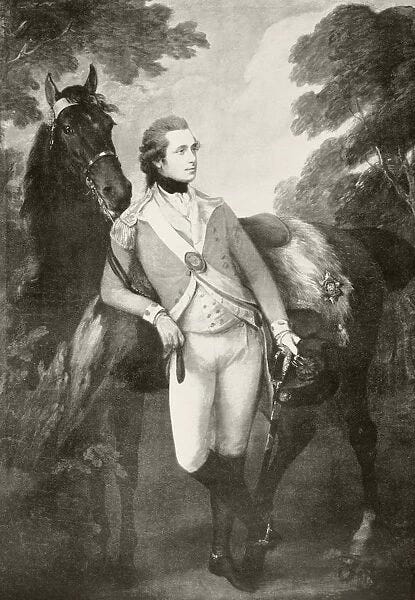
James Glass Bertram, who died in 1892, wrote several good books on the Turf and was a leading historian of horseracing and, more importantly, sporting wagers.
His historical precis of the St Leger was written only 120-odd years after the first race in 1892! I think it is far more interesting than any Wiki.
Certain races are now designated by common consent "classic." These, in the order of their occurrence, are the Two Thousand Guineas, One Thousand, and the Derby, Oaks, and St. Leger, but why they should be "classic" more than some other events of the turf I am unable to explain; they have, at any rate, become standing dishes of our racing bills of fare. In point of origin, the St. Leger is entitled to precedence as premier of "the classics." Much controversy has taken place about the exact date of the first of the great Town Moor struggles, caused, no doubt, by the fact that no name had been bestowed upon it when it was instituted. The race in reality should date from the year 1788, when Hollandaise won, but it was first run two years earlier, when Allabaculia, ridden by J. Singleton, proved victorious.
The name was fixed upon, as has been often narrated, at a dinner held in the "Red Lion Inn," in Doncaster. At that dinner the Marquis of Rockingham proposed that "the sweepstakes," first run for in 1776, should be named the "St. Leger," in compliment to Lieutenant-General Anthony St. Leger, of Park Hill, and the proposition was unanimously adopted. After a time, the Doncaster race became as famous as the Derby, and its celebration during the last sixty years has, in some degree, become an event of national significance.
The names and performances of the winning horses and successful jockeys of the St. Leger have been sedulously chronicled for many years past, and it may be said that, for good horses and exciting incidents, as well as for the value of the stakes and the betting that takes place upon it, the great Doncaster race is not behind the Derby, which is indebted for much of its success to the fact of its taking place within twenty miles of the populous city of London. Doncaster, where the race for the St. Leger is run, is not so easy of access to large numbers of spectators as the far-famed downs of Epsom; still, on the eventful day, the Town Moor becomes crowded by thousands, chiefly enthusiastic Yorkshiremen, eager to witness the grand spectacle.
The St. Leger, then, originated as a sweepstake of 25 gs. each for three-year-old horses. The days of running have been changed two or three times. The race was originally run on a Tuesday, then Wednesday became for a couple of years the St. Leger day, when it again became Tuesday, and continued to be celebrated on that day for twenty-five years afterwards, after which it was run for a time on Monday, then changed again to Tuesday. Since the year 1845, however, the St. Leger day has been Wednesday.[Pg 106] The distance run in the earlier races for the great Doncaster prize was two miles, and the horses, instead of running as at present, went the other way of the course. In 1812 the race is described as being run "over the St. Leger course," which, in the Calendar of the period, is stated to be 1 mile, 7 furlongs, and 20 yards, and 1 mile, 6 furlongs, and 100 yards on the inside; now the St. Leger distance is given in Weatherby's Calendar as 1 mile, 6 furlongs, 132 yards.
In the early years of the race the stakes were counted in guineas, the weights, 8 st. 2 lb. for colts, fillies carrying 2 lb. less. Since its institution many horses have competed, the highest number started in any year being thirty, when the winner was Mr. Watts's Memnon (1825). As few as four horses, however, have gone to the starting-post, namely in 1783 and 1785, when Phenomenon and Cowslip won. During the last quarter of a century fair fields have competed for the St. Leger Stakes. As many as nineteen horses went to the post in 1870, when victory was awarded to Hawthornden; only seven horses were selected, however, to oppose Mr. Merry's heroine, Marie Stuart. In the five years ending with 1890 fifty-nine horses faced the starter. Taking a rough average, thirteen horses made up the field for the "Sellinger," and as the public form of the year is pretty well exposed by the middle of September, many more competitors could scarcely be expected.
He gave us these personal insights into the St Leger.
Keep reading with a 7-day free trial
Subscribe to Boyd's Own Paper to keep reading this post and get 7 days of free access to the full post archives.


